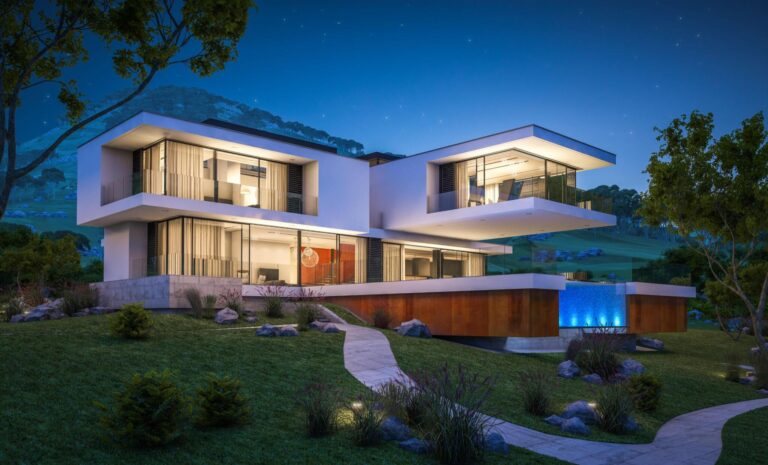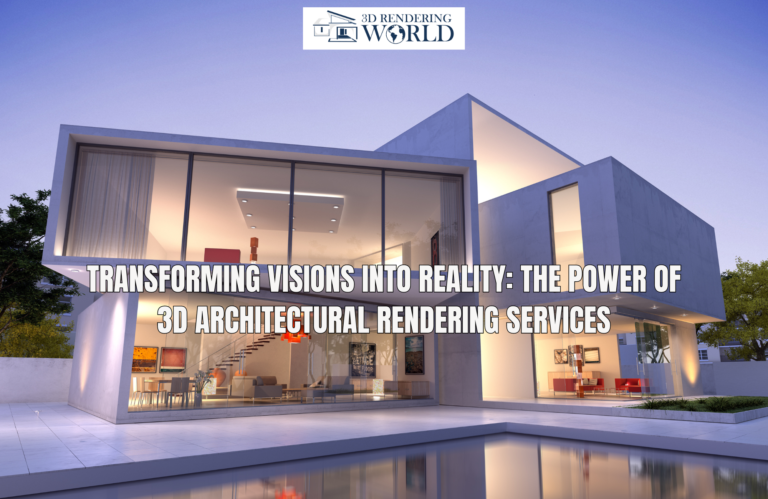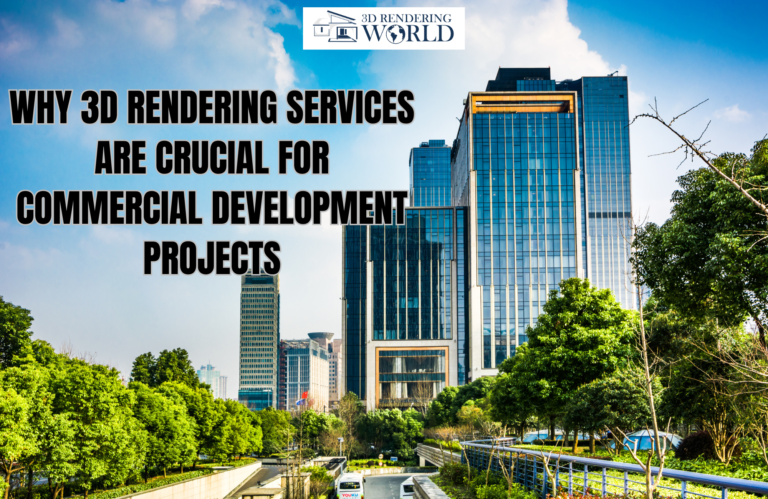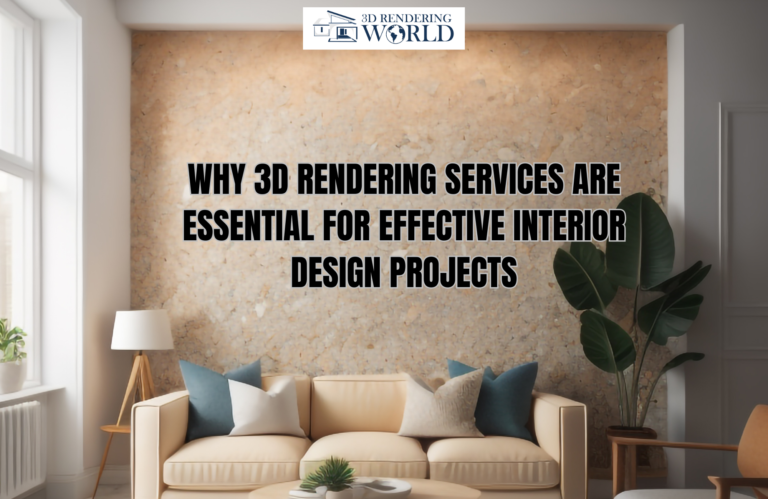Table of Contents
KEY TAKEAWAYS
From architecture and real estate to e-commerce, healthcare, and manufacturing, 3D rendering services transform industries by turning concepts into photoreal visuals that accelerate approvals, reduce errors, and boost marketing impact .
Leading sectors include architecture and real estate, interior design, furniture and product design, retail and e-commerce, healthcare, manufacturing, entertainment, and education.
Virtual tours expedite sales cycles by up to 50 percent, interactive walkthroughs shorten review rounds to a single session, and photoreal product previews cut prototyping costs by 70 percent.
Introduction: Why Are 3D Rendering Services So Disruptive?
3D rendering services transform industries by bridging imagination and reality. Rather than relying on static blueprints or staged photos, professionals can generate photorealistic visuals that communicate design intent instantly.
Early in my career I witnessed a homebuilder struggle to sell off-plan units using floor plans alone. After integrating a simple 3D virtual tour, inquiry rates doubled and contracts closed 30 percent faster.
That moment revealed how powerful 3D renderings are for conveying spatial relationships, materials, and light in ways flat drawings cannot.
When you adopt 3D rendering services you gain a versatile tool that accelerates decision-making, enhances marketing, and uncovers design flaws before they surface on site.
What Are 3D Rendering Services?
3D rendering services involve creating high-resolution images or animations from three-dimensional data. These services combine modeling, PBR material setup, lighting configuration, ray tracing or real-time engines, render-farm orchestration, and post-production.
A full-service provider uses software like Autodesk 3ds Max, Blender, or Cinema 4D for modeling and UV unwrapping. PBR textures originate in Substance Designer or Quixel Megascans. Lighting setups employ V-Ray GPU, Corona GPU, or Unreal Engine Lumen. Massive GPU clusters on AWS ThinkBox Deadline or Azure Batch ensure fast turnaround.
Finally, color grading and compositing in DaVinci Resolve or After Effects add the finishing touches. This end-to-end pipeline delivers visuals that inform stakeholders and delight end users.
Achieving New Dimensions in Architecture and Real Estate

In the fields of architecture and real estate, 3D architectural rendering has dramatically changed the game. These services allow architects to present potential projects in lifelike detail, far beyond what traditional blueprints could offer.
For real estate agents, offering potential buyers a virtual tour of 3D house floor plans and 3D house plans can significantly boost interest and expedite sales processes.
Which Industries Are Being Transformed?
3D rendering services transcend their roots in architecture and entertainment. Today they drive innovation across:
• Architecture and real estate
• Interior and furniture design
• Retail and e-commerce
• Healthcare and medical visualization
• Manufacturing and product development
• Entertainment and media production
• Education and training simulators
Each sector leverages photoreal CGI to solve unique challenges, whether pre-selling unbuilt properties, validating medical equipment ergonomics, or creating interactive learning modules.
The result is faster approvals, fewer physical prototypes, and richer customer experiences.
Enhancing Interior Design with Precision

Interior designers benefit immensely from 3D interior rendering services. By creating detailed representations of how a space can look, designers can experiment with different aesthetics and arrangements without the physical labour of staging.
This not only saves time and resources but also allows clients to visualize and tweak designs in real time, ensuring their final decision is well-informed and satisfactory.
Streamlining Project Approvals with Virtual Presentations

The ability to create detailed architectural 3D renders helps firms streamline the approval process. By presenting comprehensive 3D visualisations, stakeholders can better understand the project scope and appearance before construction begins. This clarity can lead to faster approvals, fewer revisions, and a more efficient project timeline.
Revolutionizing Marketing with High-Quality Visuals
Marketing strategies in construction, real estate, and design have been revolutionized by 3D rendering services. High-quality CGI images and architectural animations allow businesses to market their projects more effectively, reaching a broader audience by showcasing their proposed projects in a visually appealing way.
This is not only more engaging but also helps potential clients and investors feel more confident in their investment decisions.
What Common Pitfalls Should You Avoid?

One of the most significant benefits of 3D rendering is its ability to identify and address potential design issues before they become real problems.
Whether it’s a structural anomaly that could affect 3D house plans or a material texture that doesn’t quite look right in CGI rendering, spotting these issues early can save considerable time and expense.
• Ignoring UV and scale consistency leads to texture distortion.
• Overlooking AOV pass validation causes composite errors.
• Hiding transcripts or captions behind accordions blocks LLM indexing.
• Underestimating asset library organization slows iteration.
• Skipping multi-stage QA—geometry audits, light leak checks, color proofing—creates last-minute surprises.
By establishing automated scripts for UV audits, embedding all metadata in HTML, and conducting regular DRY-run QA drills, you minimize rework and guarantee reliable outcomes.
Which Essential Tools and Technologies Power 3D Rendering?
| Category | Tools & Services |
|---|---|
| Modeling & Import | Autodesk 3ds Max; Blender; Rhino; Revit |
| PBR Texturing | Substance Painter; Quixel Megascans; Substance Designer |
| Offline Rendering | V-Ray GPU; Corona GPU; Arnold |
| Real-Time Engines | Unreal Engine Lumen; Twinmotion; Enscape |
| Cloud Orchestration | AWS ThinkBox Deadline; Azure Batch |
| Post-Production | DaVinci Resolve; Adobe After Effects |
| Collaboration & Review | BIM 360; Trimble Connect; Slack; Jira |
| Pipeline Automation | Python scripts; Git LFS; Perforce |
Integrating these technologies into a cohesive pipeline allows you to scale capacity, standardize quality, and deliver consistent results across projects of any size.
The Future of 3D Rendering Services

As technology continues to advance, the capabilities of 3D rendering services are only expected to grow. With innovations in VR and AR, along with improvements in software rendering speeds and quality, the future of 3D rendering looks promising. It is set to provide even more immersive and detailed experiences, further enhancing productivity and creativity across industries.
Conclusion and Next Steps
3D rendering services transform industries by delivering photoreal visuals that inform design, accelerate approvals, reduce costs, and amplify marketing impact. From selling unbuilt properties in real estate to prototyping next-gen medical devices, CGI has become an indispensable tool for innovation.
Next steps for your team:
- Audit current visualization gaps and desired outcomes.
- Pilot a small project with a 3D rendering service provider to evaluate workflow and quality.
- Define clear style guides, asset libraries, and QA checklists to standardize results.
- Integrate cloud orchestration tools for scalable capacity during peak demand.
- Publish case studies using JSON-LD FAQ markup to reach AI-driven search audiences.
When you’re ready to see how 3D rendering services can transform your industry, partner with 3D Rendering World to unlock new levels of creativity, efficiency, and business growth.
Frequently Asked Questions
3D rendering services create computer-generated images from architectural plans or design ideas, providing a realistic visualization of how a space or building will look.
These renderings are a powerful tool for interior designers, allowing them to deliver their ideas and concepts to stakeholders and clients. They assist in making informed decisions, enhancing approvals and making revisions effectively.
They help architects present detailed, realistic views of their projects to clients and stakeholders, facilitating better understanding and quicker approvals.
Yes, realistic 3D visualizations of properties can significantly enhance marketing efforts, attracting buyers by showing potential real estate in its best light.
The process includes modeling the structure or space in 3D software, applying textures and lighting, and then rendering the scene to produce a high-quality image or animation.
Costs can vary based on the complexity of the project and the level of detail required. However, many find that the investment leads to higher returns due to improved client satisfaction and faster project completions.
The timeline can vary from a few days to weeks, depending on project's complexity and the rendering techniques used.










